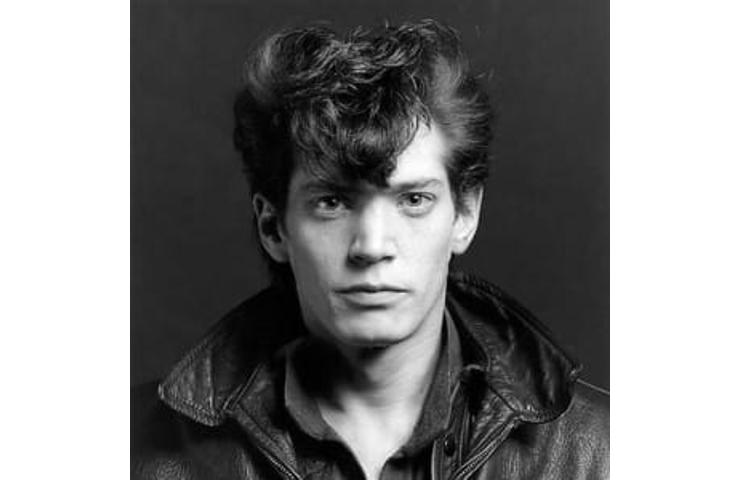No products in the cart.

Photographer, Activist, Illustrator, Painter, Sculptor (1946–1989)
A controversial giant of late 20th century photography, Robert Mapplethorpe is best known for his large-scale black-and-white portraits of everything from flowers to athletic nudes.
Synopsis
Born on November 4, 1946 in Queens, New York, Robert Mapplethorpe is widely recognized as a giant of late 20th century photography. During the late 1960s and early ’70s, he was an intimate companion of fellow artist Patti Smith before becoming a starkly controversial photographer who was highly sought after for his portraiture by luminaries. His depiction of frank, homosexual eroticism continues to incite debate and raise questions about artistic censorship. He died of AIDS-related complications in 1989.
Background
Robert Mapplethorpe was born on November 4, 1946 in the Floral Park section of Queens, New York. Always an artistic soul, he was the third of six children in a Catholic family and showed an early interest in craft and illustration. Mapplethorpe had a stern, disciplinarian father who expected his son to study commercial art. While attending the Pratt Institute in the Clinton Hill section of Brooklyn, the young Mapplethorpe briefly joined the Reserve Officers’ Training Corps (ROTC) for the U.S. Armed Forces and pledged the Pershing Rifles fraternity in his freshman year.
Time With Patti Smith
Mapplethorpe met and befriended fellow artist Patti Smith in 1967 when she came to New York City looking friends she had known in high school. The two were deeply drawn to each other and soon got their own Brooklyn apartment, subsisting on meager resources while supporting each other’s art and becoming intimately involved. In 1970, they moved to Manhattan’s Chelsea Hotel. Mapplethorpe eventually photographed the image of Smith that would be used for the cover of her groundbreaking debut album Horses (1975). The print is now part of the Tate Modern’s collection in London. Their friendship would endure even as their careers took them in different directions.
Having his first solo exhibition in 1973, the highly ambitious Mapplethorpe initially worked with collage/mixed media and Polaroids. He was ultimately able to establish himself as a visual artist with solid connections, becoming a photographer for Andy Warhol’s Interview Magazine. In 1972, he entered into a romantic relationship and then friendship with millionaire Sam Wagstaff, who was Mapplethorpe’s patron as well as an avid arts collector.
Contrasting Themes in Art
While much of Mapplethorpe’s work was considered erotically explicit and unconventional to some viewers, he also became renowned for a classic sensibility in his choices regarding light, shadow and shape in black and white. He regularly photographed denizens of his native city’s underground gay S&M scene, which were featured in his 1977 exhibition at the Chelsea alternative art space the Kitchen. Meanwhile, he was also becoming a sought after portrait photographer for cultural luminaries such as Carolina Herrera, Susan Sarandon, William S. Burroughs, Iggy Pop, Truman Capote and Grace Jones, among others. Mapplethorpe was known for his timeless athletic nudes as well.
Having shot pumping-iron icon Arnold Schwarzenegger in 1976, Mapplethorpe later regularly photographed female bodybuilding champ Lisa Lyon, and subsequently produced the book Lady, Lisa Lyon (1983). In 1988, Mapplethorpe published Black Book, a collection of photos capturing the nude bodies of black men in various poses. This series of photographs has continued to spark debate about its depictions decades later. Mapplethorpe also created self-portraits over the years, playing with ideas around masculinity and femininity as well as capturing the change in his appearance as his health declined.
Death and Legacy
Mapplethorpe was diagnosed with AIDS in 1986, going public with his status to encourage dialogue about fighting the disease. Still, his creative output during this time continued to flow and reached new heights. The Whitney Museum held a major retrospective of his work in 1988. The artist established The Robert Mapplethorpe Foundation that same year to support creative endeavors and provide money for HIV/AIDS research.
Robert Mapplethorpe died on March 9, 1989 in Boston, Massachusetts. In posthumous showings, Mapplethorpe’s work has continued to court opposition—examples include exhibitions mounted by the Whitney, the Corcoran Gallery in Washington, D.C., and the Contemporary Art Center in Cincinnati. In 2014, the Musée Rodin in Paris hosted the largest ever Mapplethorpe retrospective with an exhibition that juxtaposed his work with that of sculptor Auguste Rodin.
In 2015, Smith announced that she is adapting her memoir about her time with Mapplethorpe—Just Kids (2010), which won the National Book Award—into a Showtime limited series.


